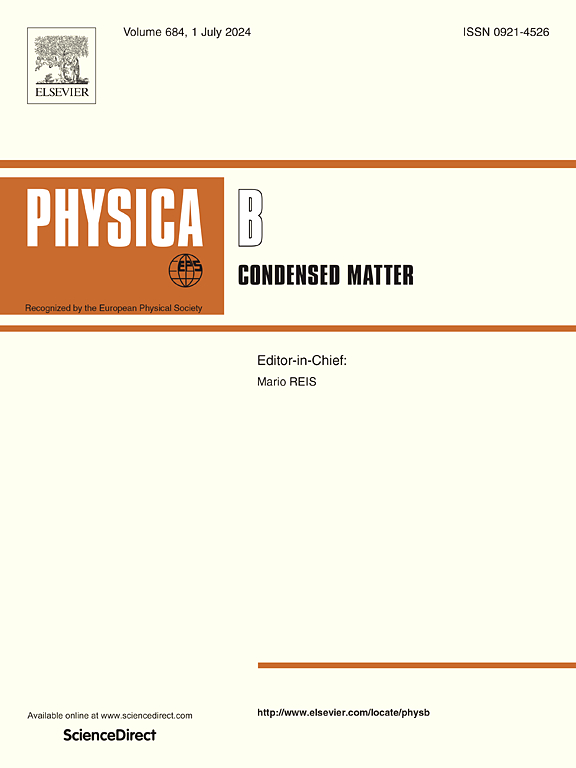通过Ce3+→Eu2+的能量转移增强Y2O3:Ce3+, Eu2+中的蓝光发射
IF 2.8
3区 物理与天体物理
Q2 PHYSICS, CONDENSED MATTER
引用次数: 0
摘要
蓝色发光荧光粉在固态照明应用中有许多适用范围。我们合成了一组以1mol % Ce3+和1,2,3,4 mol% Eu2+共掺杂的蓝光Y2O3荧光粉。x射线衍射研究表明,样品具有立方晶体结构。1 mol% Ce掺杂样品在~ 206 nm处产生了强吸收带。与Eu离子共掺杂后,发现该吸收带发生红移。在300 nm紫外光激发下,Eu2+-Ce3+共掺杂荧光粉表现出从最低的Ce3+ 5d激发态向2F7/2和2f5 / 24f基态跃迁所对应的特征性蓝色发光。此外,蓝色辐射也归因于Eu2+离子的构型间4f65d1 - 4f7允许跃迁。光致发光光谱、发光衰减曲线和能量转移效率均表明可能存在Ce3+→Eu2+离子的能量转移。本文章由计算机程序翻译,如有差异,请以英文原文为准。
Enhancing blue light emission in Y2O3:Ce3+, Eu2+ through Ce3+→ Eu2+ energy transfer
The blue emitting phosphors have numerous scopes in solid-state lighting applications. We synthesised a set of blue emitting Y2O3 phosphors co-doped with 1 mol% Ce3+ and 1, 2, 3, 4 mol% Eu2+. An X-ray diffraction study revealed that the samples have a cubic crystal structure. The 1 mol% Ce doped sample produced a strong absorption band at ∼206 nm. This absorption band was found to red-shift after co-doping with Eu ions. Under 300 nm ultraviolet excitation, the Eu2+-Ce3+ co-doped phosphors exhibited characteristic blue luminescence corresponding to transitions from the lowest Ce3+ 5d excited state to 2F7/2 and 2F5/2 4f ground state levels. In addition, the blue emission is also ascribed to the inter-configurational 4f65 d1 – 4f7 allowed transition of Eu2+ ions. The photoluminescence spectra, luminescence decay curves and energy transfer efficiency all indicated a possible energy transfer from Ce3+ → Eu2+ ions.
求助全文
通过发布文献求助,成功后即可免费获取论文全文。
去求助
来源期刊

Physica B-condensed Matter
物理-物理:凝聚态物理
CiteScore
4.90
自引率
7.10%
发文量
703
审稿时长
44 days
期刊介绍:
Physica B: Condensed Matter comprises all condensed matter and material physics that involve theoretical, computational and experimental work.
Papers should contain further developments and a proper discussion on the physics of experimental or theoretical results in one of the following areas:
-Magnetism
-Materials physics
-Nanostructures and nanomaterials
-Optics and optical materials
-Quantum materials
-Semiconductors
-Strongly correlated systems
-Superconductivity
-Surfaces and interfaces
 求助内容:
求助内容: 应助结果提醒方式:
应助结果提醒方式:


